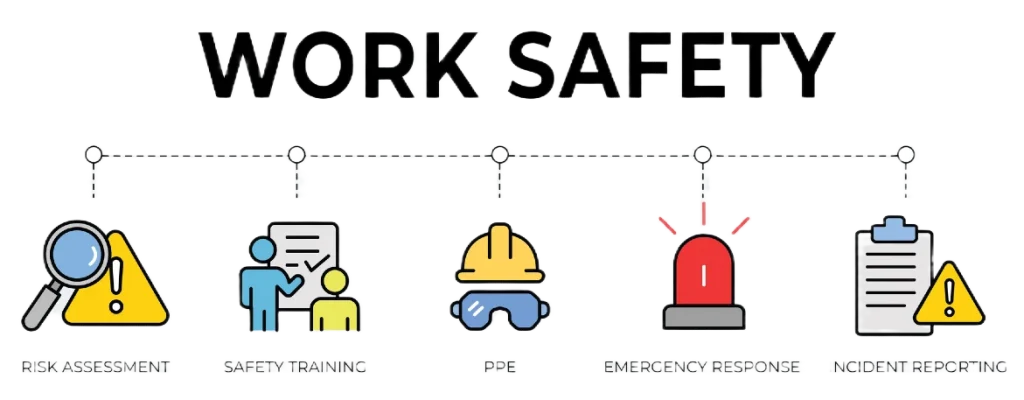Did you know that 30% of construction projects experience costly overruns due to rushed timelines?
The construction industry is no stranger to tight deadlines and immense pressure. Whether it’s an urgent client request, looming weather changes, or regulatory deadlines, rushing projects has become a norm rather than an exception. But while speeding through tasks might seem like a quick fix, it often conceals a hidden cost; one that can impact budgets, safety, and overall project quality.
Improving construction workforce training is an essential step toward reducing these costly overruns. And understanding the root causes of this rush is essential before exploring effective ways to address it.
Related: Construction Training Statistics and Insights
The High-Pressure Nature of Construction Projects
Construction projects rarely unfold in a vacuum. Each site faces a perfect storm of competing pressures. Clients often demand faster delivery, driven by their own timelines and market demands. Meanwhile, nature isn’t always cooperative; weather changes can halt work unexpectedly, forcing teams to compress schedules to make up for lost time. Regulatory bodies add another layer of complexity with strict deadlines and inspections that cannot be delayed.
Financial pressures further exacerbate the urgency. Penalty clauses in contracts may impose hefty fines for late completion, while funding deadlines require projects to meet milestones to secure continued financing. Cash flow management is a constant balancing act, and delays can cascade into significant financial strain for contractors and subcontractors alike.

Adding to this complexity is the workforce itself. The construction industry faces a chronic shortage of skilled labor, coupled with high turnover rates. Teams are often stretched thin, juggling multiple priorities with limited manpower. This scarcity pushes managers to expedite work, sometimes at the expense of proper preparation and construction safety training.
Common Causes of Rushing in Construction
At the heart of many rushed projects lies a critical issue: workforce readiness. When teams lack adequate training or experience, they are ill-equipped to handle the on-site complexities that inevitably arise. Skills gaps, insufficient onboarding, and unclear communication mean workers often learn on the fly; resulting in delays and mistakes. Addressing how to improve workforce skills in construction is critical for avoiding these pitfalls.
Poor project planning and communication compound these problems. When schedules are unrealistic or information isn’t effectively shared across teams, last-minute changes become the norm rather than the exception. Design alterations, unexpected site conditions, or equipment failures force sudden pivots, compressing timelines further.
External factors such as regulatory updates or supply chain disruptions also play a significant role. For instance, delays in material deliveries or unexpected changes to compliance requirements can derail carefully constructed timelines, pushing teams into reactive, rushed modes.
How Rushing Drives Up Costs
What initially appears as a shortcut to meet pressing deadlines often backfires, turning rushed projects into costly ones. Errors increase exponentially when workers are pressured to move quickly, leading to rework that wastes both time and materials. These mistakes not only delay progress but also inflate budgets far beyond original estimates.

Safety risks rise sharply as well. Rushing increases the likelihood of accidents and injuries on site, resulting in downtime, medical expenses, and potential legal liabilities. This highlights the importance of construction safety training as a key preventive measure. The human cost of these incidents is devastating, and the financial cost to companies can be crippling.
Quality inevitably suffers too. Rushed workmanship can result in defects that undermine structural integrity or fail to meet client expectations, damaging reputations and risking costly warranty claims. Furthermore, inefficient labor use (such as overtime or repeated tasks due to errors) wastes precious resources and further strains budgets.
The Role of Workforce Readiness in Mitigating These Issues
There is a silver lining. Many of the pressures that drive rushing can be significantly alleviated by investing in skilled labor training programs. Well-trained, confident workers navigate complex projects more efficiently and safely, reducing the need to cut corners.

A structured onboarding program plays a pivotal role here. By ensuring new hires fully understand compliance requirements, safety protocols, and project expectations from day one, companies set the foundation for consistent quality and fewer delays. Comprehensive construction workforce training and ongoing development are critical components of the best training programs for construction workers; fostering better communication, teamwork, and the ability to tackle unforeseen challenges on site.
Workforce readiness isn’t just a checkbox; it’s a strategic investment that pays dividends in smoother projects, lower costs, and safer workplaces.
Conclusion
Rushing in construction is often the visible symptom of deeper, systemic issues such as inadequate preparation and workforce readiness. While the pressures driving this haste are real and persistent, the hidden costs (such as errors, accidents, wasted resources, and damaged reputations) are far more significant.
By addressing these root causes through thorough onboarding and continuous construction workforce training, construction firms can reduce the need to rush, ultimately saving time and money while building stronger, safer teams.